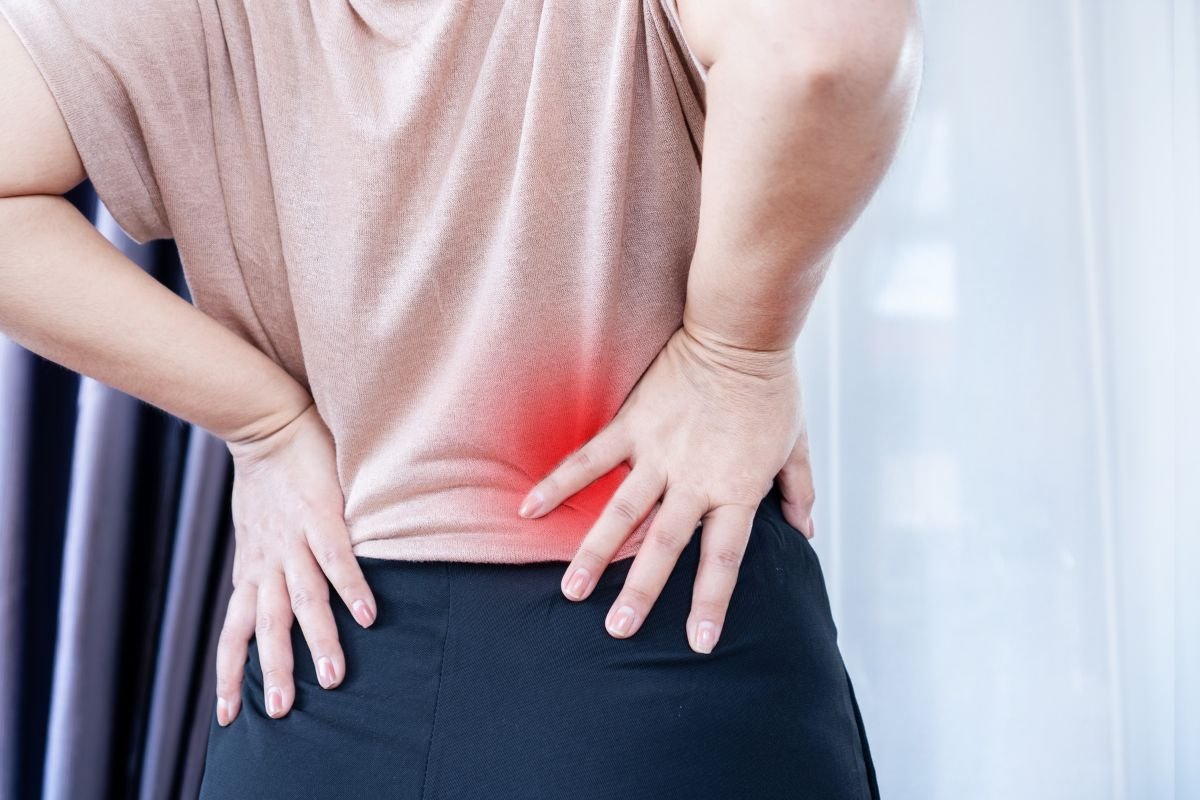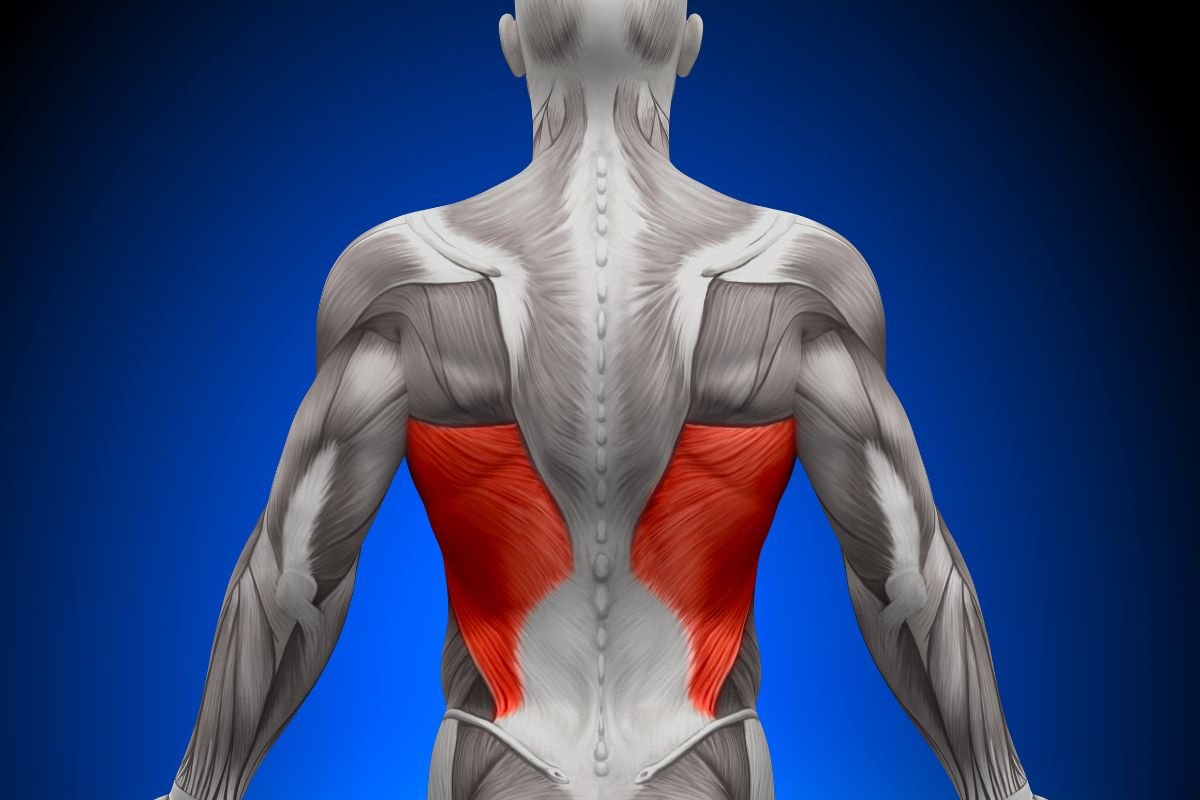Latissimus dorsi pain, often simply referred to as “lat pain,” is a common complaint among individuals who engage in physical activities that involve heavy lifting, repetitive arm movements, or intense workouts. The latissimus dorsi, or “lat,” is a large, flat muscle located on the back that plays a critical role in various upper body movements. This article delves into the causes, symptoms, and treatment options for latissimus dorsi pain, providing a comprehensive guide for those affected by this condition.
Anatomy of the Latissimus Dorsi
The latissimus dorsi is one of the largest muscles in the human body, extending from the lower back to the upper arm. It originates from the lower thoracic and lumbar vertebrae, the iliac crest of the pelvis, and the lower ribs. The muscle inserts into the humerus (upper arm bone), allowing it to facilitate a wide range of movements, including shoulder adduction, extension, and internal rotation.
Functions of the Latissimus Dorsi
The primary functions of the latissimus dorsi include:
- Shoulder Adduction: Bringing the arm closer to the body.
- Shoulder Extension: Moving the arm backward.
- Internal Rotation: Rotating the arm inward.
These movements are crucial for various activities, from daily tasks to athletic endeavors, making the latissimus dorsi a vital muscle for overall upper body function.
Causes of Latissimus Dorsi Pain
Latissimus dorsi pain can result from several factors, ranging from acute injuries to chronic conditions. Understanding these causes is essential for effective treatment and prevention.
1. Muscle Strain

One of the most common causes of latissimus dorsi pain is muscle strain. This can occur due to:
- Overuse: Engaging in repetitive activities that involve the latissimus dorsi, such as swimming, rowing, or throwing sports.
- Heavy Lifting: Lifting heavy weights without proper form or preparation.
- Sudden Movements: Making sudden, forceful movements that overstretch the muscle.
2. Tendonitis
Tendonitis, the inflammation of the tendons attaching the latissimus dorsi to the humerus, can cause significant pain. This condition often arises from repetitive stress or overuse, particularly in athletes and individuals who perform repetitive upper body movements.
3. Muscle Imbalance
Muscle imbalances occur when one muscle group is stronger or more developed than its opposing group. In the case of the latissimus dorsi, imbalances with the pectoral muscles or shoulder muscles can lead to pain and discomfort.
4. Injuries
Direct trauma or injuries, such as falls, car accidents, or sports-related incidents, can damage the latissimus dorsi muscle, leading to pain and functional limitations.
5. Postural Issues
Poor posture, particularly rounded shoulders and a hunched back, can place excessive strain on the latissimus dorsi, resulting in pain over time. This is common in individuals who spend long hours sitting at desks or using computers.
6. Underlying Medical Conditions
Certain medical conditions, such as fibromyalgia or myofascial pain syndrome, can also contribute to latissimus dorsi pain. These conditions involve widespread muscle pain and tenderness, affecting various muscle groups, including the latissimus dorsi.
Symptoms of Latissimus Dorsi Pain
Recognizing the symptoms of latissimus dorsi pain is crucial for timely diagnosis and treatment. Common symptoms include:
1. Localized Pain
Pain is typically felt in the mid to lower back region, extending to the side of the body. The pain may be sharp or dull, depending on the underlying cause.
2. Muscle Tightness

Tightness or stiffness in the latissimus dorsi muscle is a common symptom, particularly after physical activity or prolonged periods of inactivity.
3. Reduced Range of Motion
Individuals with latissimus dorsi pain may experience a reduced range of motion in the shoulder and upper arm, making it difficult to perform certain movements.
4. Swelling and Inflammation
In cases of severe strain or injury, swelling and inflammation may occur around the affected area, accompanied by tenderness to touch.
5. Radiating Pain
In some cases, pain may radiate from the latissimus dorsi to other areas, such as the shoulder, upper arm, or even the lower back.
Diagnosing Latissimus Dorsi Pain
Diagnosing the underlying cause of latissimus dorsi pain involves a thorough evaluation by a healthcare professional. The diagnostic process may include:
1. Medical History
A detailed medical history helps identify potential causes, such as recent injuries, physical activities, or underlying medical conditions.
2. Physical Examination
A physical examination assesses the affected area for signs of swelling, tenderness, and range of motion. The healthcare provider may also test muscle strength and flexibility.
3. Imaging Studies
In some cases, imaging studies such as X-rays, MRI, or ultrasound may be necessary to rule out fractures, tears, or other structural abnormalities.
4. Special Tests
Specialized tests, such as the Neer test or Hawkins-Kennedy test, may be performed to assess for specific conditions like shoulder impingement or tendonitis.
Treatment Options for Latissimus Dorsi Pain
Effective treatment for latissimus dorsi pain depends on the underlying cause and severity of the condition. Common treatment options include:
1. Rest and Activity Modification
Resting the affected muscle and avoiding activities that exacerbate the pain is crucial for recovery. Gradually reintroducing activities and modifying techniques can help prevent future strain.
2. Ice and Heat Therapy
Applying ice packs to the affected area can help reduce inflammation and numb the pain. Heat therapy, such as warm compresses or heating pads, can relax tight muscles and improve blood flow.
3. Pain Medication
Over-the-counter pain medications, such as ibuprofen or acetaminophen, can help manage pain and reduce inflammation. In severe cases, prescription medications may be necessary.
4. Physical Therapy
Physical therapy plays a vital role in treating latissimus dorsi pain. A physical therapist can design a personalized exercise program to strengthen the muscle, improve flexibility, and correct any muscle imbalances.
5. Massage Therapy
Massage therapy can help relieve muscle tightness and improve circulation in the affected area. Techniques such as deep tissue massage or myofascial release can be particularly beneficial.
6. Stretching and Strengthening Exercises
Incorporating specific stretching and strengthening exercises into a daily routine can help prevent latissimus dorsi pain. Exercises such as lat stretches, shoulder rolls, and resistance band exercises can improve muscle function and reduce the risk of injury.
7. Posture Correction
Improving posture is essential for preventing and managing latissimus dorsi pain. Ergonomic adjustments, such as using an appropriate chair and desk setup, can help maintain proper alignment and reduce strain on the muscle.
8. Surgery
In rare cases, when conservative treatments fail to alleviate the pain, surgical intervention may be necessary. Surgery may involve repairing torn tendons or addressing structural abnormalities contributing to the pain.
Preventing Latissimus Dorsi Pain
Preventing latissimus dorsi pain involves adopting healthy habits and making lifestyle changes that promote muscle health. Here are some tips to prevent latissimus dorsi pain:
1. Warm-Up and Cool-Down

Always perform a proper warm-up before engaging in physical activities to prepare the muscles for exercise. Similarly, cooling down after workouts helps prevent muscle stiffness and soreness.
2. Maintain Proper Form
Using correct techniques and form during exercises and daily activities can prevent strain and injuries to the latissimus dorsi muscle. Seek guidance from a fitness professional if needed.
3. Gradual Progression
Gradually increase the intensity and duration of physical activities to allow the muscles to adapt and strengthen over time. Avoid sudden increases in activity levels that can lead to overuse injuries.
4. Strengthening and Flexibility Exercises
Regularly incorporate strengthening and flexibility exercises into your routine to maintain muscle balance and prevent imbalances that can lead to pain.
5. Ergonomic Adjustments
Make ergonomic adjustments to your workspace and daily activities to reduce strain on the latissimus dorsi muscle. This includes using supportive chairs, adjusting desk height, and taking breaks to stretch.
6. Stay Hydrated and Eat a Balanced Diet
Proper hydration and nutrition are essential for muscle health. Ensure you drink enough water and consume a balanced diet rich in vitamins and minerals to support muscle function and recovery.
When to Seek Medical Attention
While latissimus dorsi pain can often be managed with self-care and conservative treatments, certain situations require medical attention. Seek medical help if you experience:
- Severe or Persistent Pain: Pain that does not improve with rest and self-care measures.
- Significant Swelling or Bruising: Visible swelling or bruising around the affected area.
- Difficulty Moving the Arm: Inability to move the arm or shoulder without pain.
- Numbness or Tingling: Numbness, tingling, or weakness in the arm or hand.
- Signs of Infection: Redness, warmth, or fever, which may indicate an infection.
Conclusion
Latissimus dorsi pain is a common issue that can significantly impact daily activities and athletic performance. Understanding the causes, symptoms, and treatment options is crucial for effective management and prevention. By adopting healthy habits, maintaining proper form, and seeking timely medical attention when necessary, individuals can reduce the risk of latissimus dorsi pain and maintain optimal muscle health. Whether you’re an athlete, fitness enthusiast, or someone experiencing lat pain from daily activities, this comprehensive guide provides the knowledge and tools needed to address and prevent latissimus dorsi pain.







